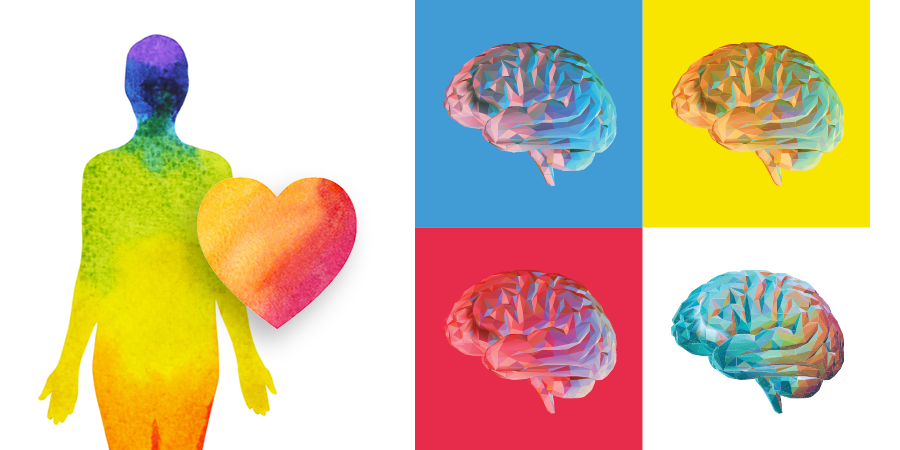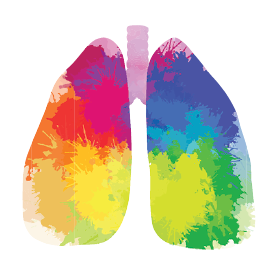
Mind, Body & Heart
To facilitate engagement of the mind and increased brainwave synchrony, Dr. Zadina offered participants the 3 Cs strategy—choice, control, and challenge.
She encouraged faculty to smile and to have a relaxed attitude and body language.
Cognitive neuroscientist, educator, and author Janet N. Zadina, Ph.D. delivered a practical, strategy-filled, research-based presentation just before the start of the spring semester at the Office of Learning Communities annual professional development institute—Transformative Pedagogies and Engagement Strategies to Deepen Learning and Enhance
Student Success.
Dr. Zadina is the author of Better Than Before: Recapturing the Mind/Body, Brain and Heart of Learners, which bridges the fields of education and neuroscience, educating educators on the effects of anxiety, stress, and trauma, particularly those experienced during the pandemic, on student learning and behavior.
 BHCC faculty, staff, and administrators that participated were introduced to the new field of positive education, where educators and students develop synchrony in not only the mind but also their body and hearts, and were given strategies to increase engagement and motivation for better learning.
BHCC faculty, staff, and administrators that participated were introduced to the new field of positive education, where educators and students develop synchrony in not only the mind but also their body and hearts, and were given strategies to increase engagement and motivation for better learning.
“Lack of focus, trouble with memory…have you noticed any of these behaviors in the classroom?” asked Dr. Zadina. “Our students are not the same as they were before the pandemic—what’s happened to them, and what can we do about it? Let’s use our powers to capture and engage every one of our students.”
Beginning with the minds of learners, Dr. Zadina explained how negative emotions, such as the stress and anxiety experienced throughout the pandemic, activate an area of the frontal lobe of the brain known as the limbic system, which controls the mind’s emotional state, activating a fight or flight response and diminishing the executive functions, such as attention, self-regulation, memory, and initiation, that are critical to student success. “It's not that they can’t learn,” she said. “It’s that they’re unavailable to learn because of the emotions taking over their limbic system.”
“It's not that they can’t learn,” Dr. Zadina said. “It’s that they’re unavailable to learn because of the emotions taking over their limbic system.”
Participants were tasked with taking knowledge into action by making a list of strategies throughout the Institute and developing an action plan to integrate four to five strategies in their classrooms. Dr. Zadina discussed the importance of building student-teacher relationships and helping students cope. “Emotion affects learning,” she said. “For example, when anxiety goes up, test scores go down. We know this about test anxiety, but any kind of anxiety or emotion has an impact on learning.” She encouraged faculty to smile and to have a relaxed attitude and body language. “Relationships are key,” she added. “You ask, are you okay? How are things going? Is something going on today?”
Moving on to the pathways between the brain and the body, Dr. Zadina asked faculty to participate in a breathing exercise to demonstrate how breath stimulates the vagus nerve and how one can use their body to calm the brain. “Teach students to reduce stress and anxiety in ways that make them more hopeful,” she said, reminding participants that a little anxiety is okay—it means they care about their future and have goals and aspirations. “We want students to build resilience the same way they build other strengths. Maybe they don’t do as well on one test and may drop back a little. They handle it and move forward. Setbacks are part of the process. It’s not a straight line.”
 Shifting to student attention, Dr. Zadina explained how the brain’s central executive (conscious) and default mode (subconscious) networks operate, and the role of brainwave frequency and the brain’s speed on attention. She shared research from Slovenian neuroscientist Ivo Davidesco that demonstrated the correlation between brainwave synchrony and increased attention by measuring students’ brainwaves using an electroencephalogram, or EEG, to measure electrical activity in the brain. The findings concluded that when students are engaged and jointly paying attention, alpha waves that indicate daydreaming or lack of focus are suppressed, leaving the brain open to external stimulation and improved learning.
Shifting to student attention, Dr. Zadina explained how the brain’s central executive (conscious) and default mode (subconscious) networks operate, and the role of brainwave frequency and the brain’s speed on attention. She shared research from Slovenian neuroscientist Ivo Davidesco that demonstrated the correlation between brainwave synchrony and increased attention by measuring students’ brainwaves using an electroencephalogram, or EEG, to measure electrical activity in the brain. The findings concluded that when students are engaged and jointly paying attention, alpha waves that indicate daydreaming or lack of focus are suppressed, leaving the brain open to external stimulation and improved learning.
To facilitate engagement of the mind and increased brainwave synchrony, Dr. Zadina offered participants the 3 Cs strategy—choice, control, and challenge. “One of the most challenging things about the pandemic was we felt we didn’t have a choice,” she reminded participants. “We were on lockdown, we weren’t allowed to leave our homes, we had to wear a mask… but when you reframe those notions, and think, I choose to wear a mask, or I choose to stay home, then you have a choice.”
To facilitate engagement of the mind and increased brainwave synchrony, Dr. Zadina offered participants the 3 Cs strategy—choice, control, and challenge.
Educators can give students a choice in the classroom. When giving an exam, faculty could ask students to answer four out of five questions or offer homework menu options or alternatives for assigned reading. By giving students a choice, there is perceived control. “Choice goes hand in hand with control,” said Dr. Zadina. “When you give students a choice, they can take control of their learning.” But how can faculty grade students when giving choices in their classroom? With each assignment, Dr. Zadina suggests raising the challenge. “Engaging in a challenging task activates the reward pathway in the brain,” she says. “It doesn’t need to be more difficult, but it needs to be more complex.” Educators should strive to balance challenge and skill in their classrooms to facilitate engagement and improved learning.

